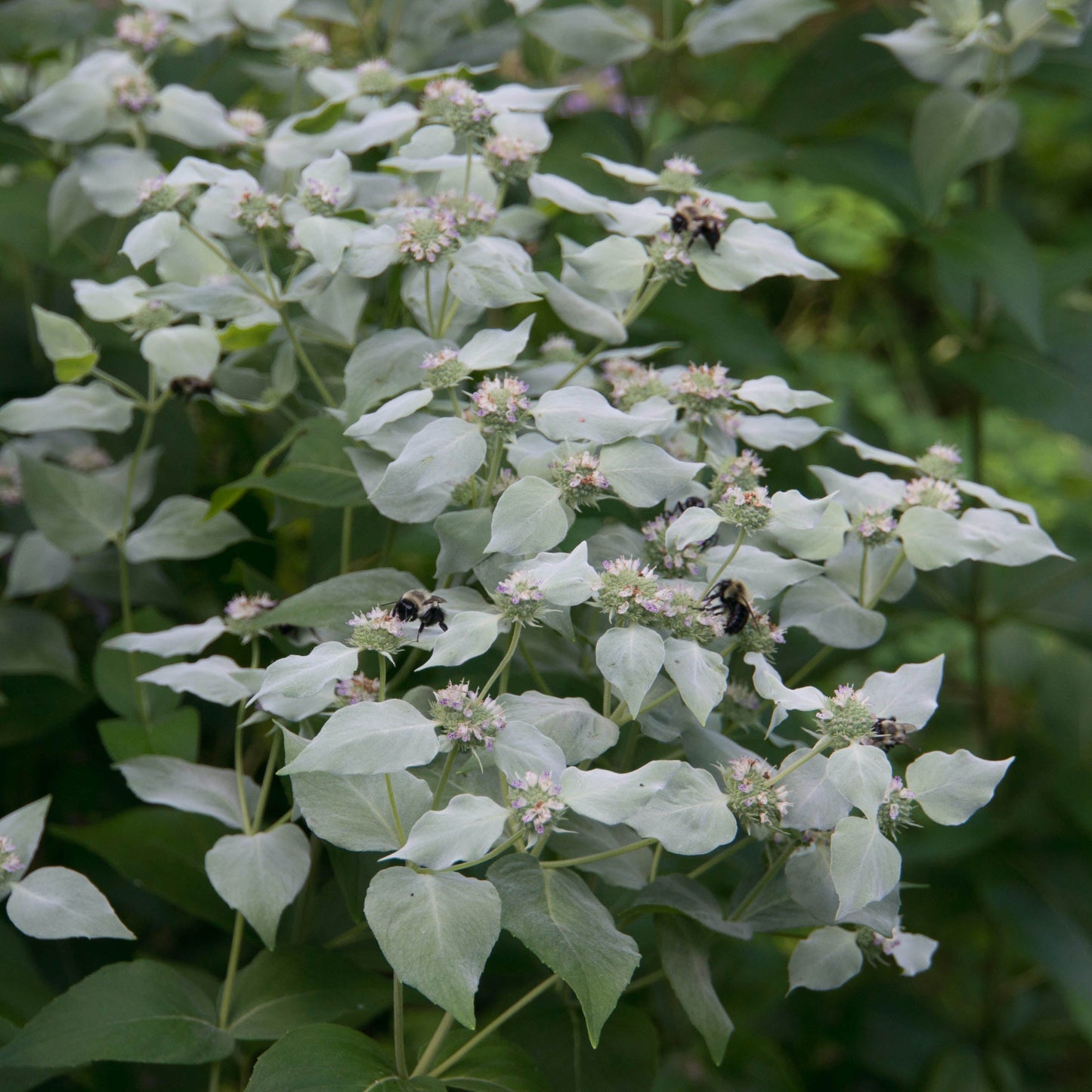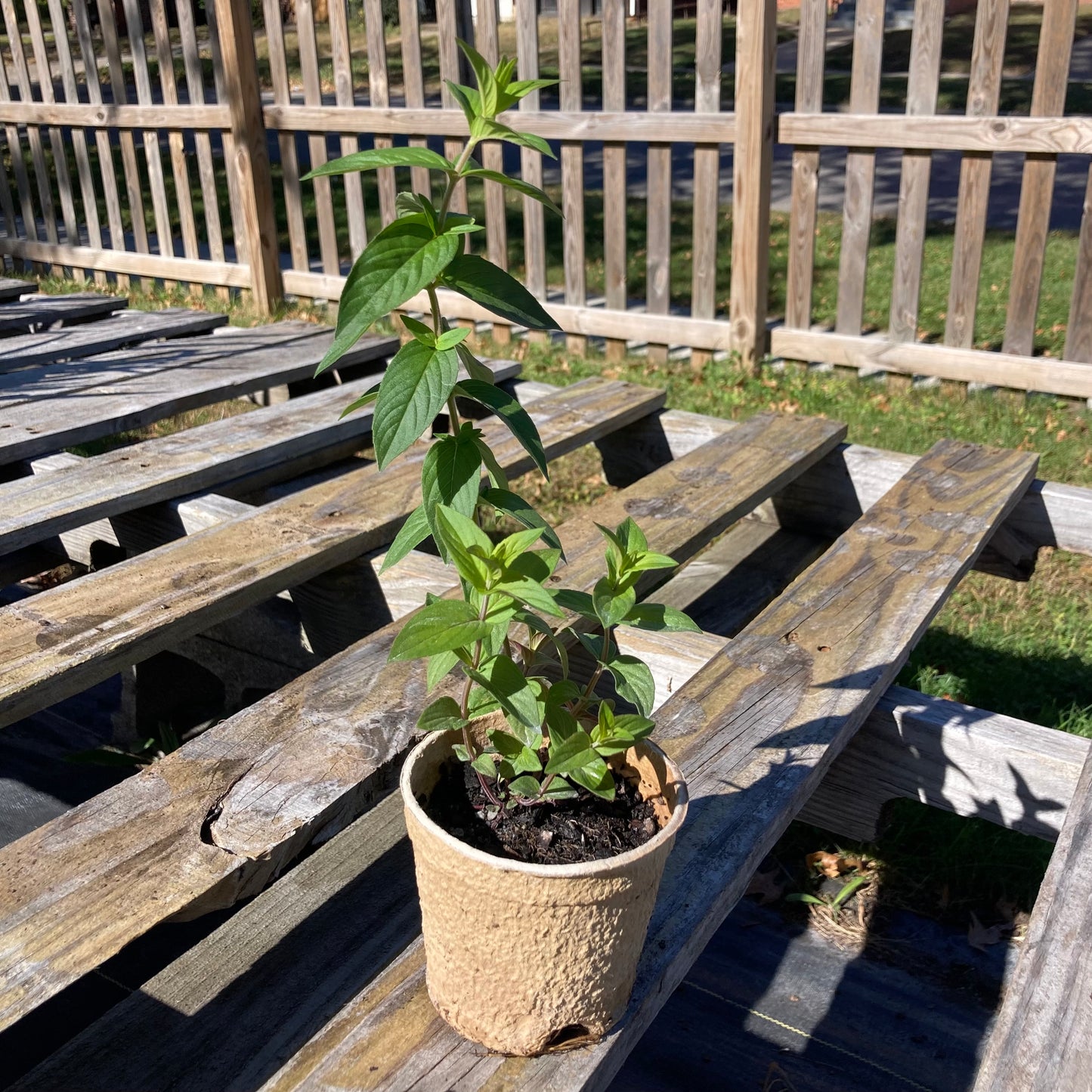Short-toothed mountain mint
Pycnanthemum muticum
Pycnanthemum muticum
Couldn't load pickup availability
Sun/shade: Full sun to part shade
Soil moisture: Dry to medium
Height: 3'
Flowering period: July
Deer resistance: High
In the heat of summer, the silvery foliage of short-toothed mountain mint appears like a vision of winter frost. While the thought is briefly refreshing, the plant offers very real refreshment to a multitude of pollinators. Its small, purple-speckled flowers bloom in July, providing nectar to flies, wasps, beetles, moths, butterflies, and bees large and small. Many of these insects are predators of pests like aphids and stink bugs, and planting short-toothed mountain mint can thus promote the health of one’s vegetable and / or flower garden.
Due to its clonal growth pattern, short-toothed mountain mint will naturally form a colony that gets larger every year. The plant is not aggressive in the manner of exotic mints, however, and curtailing its spread is an easy matter. In the springtime, one should press a spade into the soil at the desired perimeter of the mint patch, severing the plant’s underground spreading rhizomes. The seedlings that are outside of this perimeter can then be pulled by hand. This technique is called root pruning, and it is useful for containing the spread of many plants that grow in a clonal manner.
Reaching a height of approximately 3 feet, short-toothed mountain mint has a handsome, upright form which is resistant to blow-down and flopping. The plant grows well under both full sun and partial shade, and with the latter, it generally doesn’t lean towards the sun. Short toothed mountain mint prefers soils of moderate moisture but has fairly good drought tolerance and is reported to grow well on slopes. The plant’s silvery foliage is a lovely counterpoint to the showy blooms of purple coneflower, gray-headed coneflower, swamp milkweed, wild bergamot, dense blazing star, and others.
Photo © Dave Lage, CC BY-SA 2.0.



